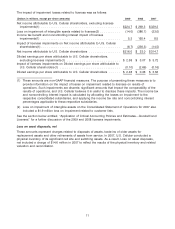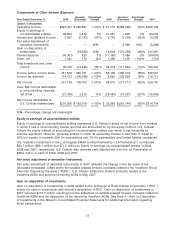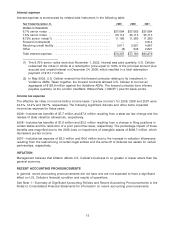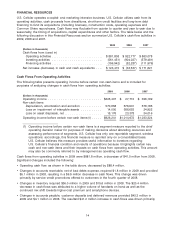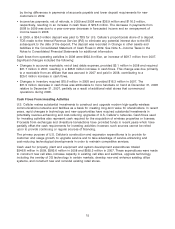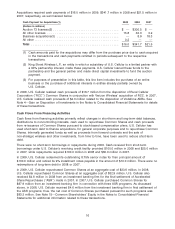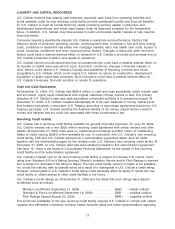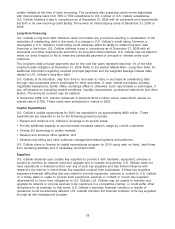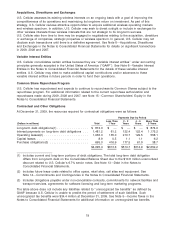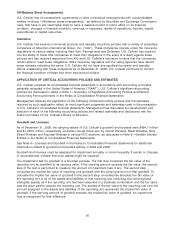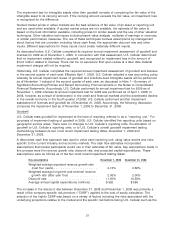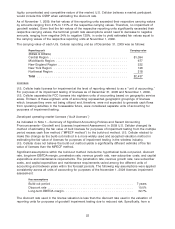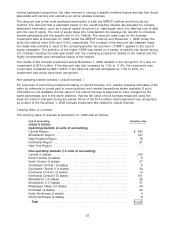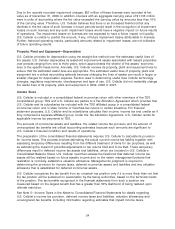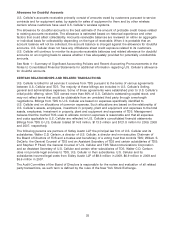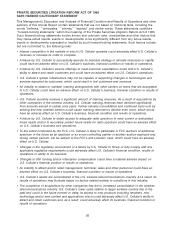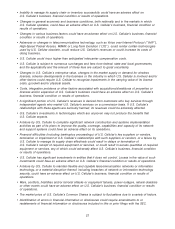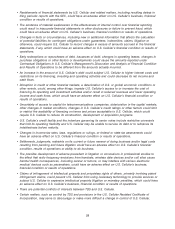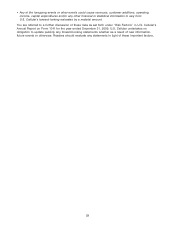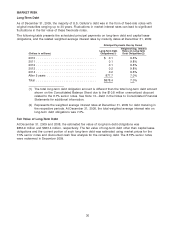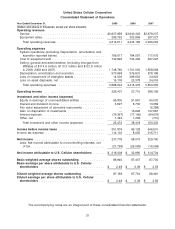US Cellular 2009 Annual Report Download - page 29
Download and view the complete annual report
Please find page 29 of the 2009 US Cellular annual report below. You can navigate through the pages in the report by either clicking on the pages listed below, or by using the keyword search tool below to find specific information within the annual report.
The impairment test for intangible assets other than goodwill consists of comparing the fair value of the
intangible asset to its carrying amount. If the carrying amount exceeds the fair value, an impairment loss
is recognized for the difference.
Quoted market prices in active markets are the best evidence of fair value of an asset or reporting unit
and are used when available. If quoted market prices are not available, the estimate of fair value is
based on the best information available, including prices for similar assets and the use of other valuation
techniques. Other valuation techniques include present value analysis, multiples of earnings or revenues,
or similar performance measures. The use of these techniques involves assumptions by management
about factors that are uncertain including future cash flows, the appropriate discount rate and other
inputs. Different assumptions for these inputs could create materially different results.
As discussed below, U.S. Cellular completed its required annual impairment assessment of goodwill and
licenses for 2009 as of November 1, 2009. In connection with that assessment, U.S. Cellular determined
that no impairment existed related to goodwill, and recognized an impairment loss in the amount of
$14.0 million related to licenses. There can be no assurance that upon review at a later date material
impairment charges will not be required.
Historically, U.S. Cellular completed the required annual impairment assessment of goodwill and licenses
in the second quarter of each year. Effective April 1, 2009, U.S. Cellular adopted a new accounting policy
whereby its annual impairment review of goodwill and indefinite-lived intangible assets will be performed
as of November 1 instead of the second quarter of each year, as discussed in Note 1—Summary of
Significant Accounting Policies and Recent Accounting Pronouncements in the Notes to Consolidated
Financial Statements. Accordingly, U.S. Cellular performed its annual impairment test for 2009 as of
November 1, 2009 whereas its annual impairment test for 2008 was performed as of April 1, 2008. In
2008, however, as a result of deterioration in the credit and financial markets and the accelerated decline
in the overall economy in the fourth quarter of 2008, U.S. Cellular performed another impairment
assessment of licenses and goodwill as of December 31, 2008. Accordingly, the following discussion
compares the impairment test as of November 1, 2009 to December 31, 2008.
Goodwill
U.S. Cellular tests goodwill for impairment at the level of reporting referred to as a ‘‘reporting unit.’’ For
purposes of impairment testing of goodwill in 2009, U.S. Cellular identified five reporting units based on
geographic service areas. There were no changes to U.S. Cellular’s reporting units, the allocation of
goodwill to U.S. Cellular’s reporting units, or to U.S. Cellular’s overall goodwill impairment testing
methodology between its two most recent impairment testing dates, November 1, 2009 and
December 31, 2008.
A discounted cash flow approach was used to value each reporting unit, using value drivers and risks
specific to the current industry and economic markets. The cash flow estimates incorporated
assumptions that market participants would use in their estimates of fair value. Key assumptions made in
this process were the revenue growth rate, discount rate, and projected capital expenditures. These
assumptions were as follows as of the two most recent impairment testing dates:
Key assumptions November 1, 2009 December 31, 2008
Weighted-average expected revenue growth rate
(next four years) ........................ 2.13% 2.69%
Weighted-average long-term and terminal revenue
growth rate (after year four) ............... 2.00% 2.00%
Discount rate ........................... 11.50% 10.50%
Average annual capital expenditures (millions) .... $520 $556
The increase in the discount rate between December 31, 2008 and November 1, 2009 was primarily a
result of the company-specific risk premium (‘‘CSRP’’) applied to the cost of equity calculation. The
selection of the higher CSRP was based on a variety of factors including the risks associated with the
underlying projections relative to the market and the specific risk factors facing U.S. Cellular such as the
21


